A strand’s journey begins long before it graces a head, rooted in the very earth that yields the elements. To trace the lineage of modern bonnets, particularly those cherished within textured hair communities, is to walk a path through time, guided by ancestral whispers and the enduring wisdom of resilient cultures. This exploration is not a dry chronicle of fabric and form; it is a meditation on the protective wraps, veils, and cloths that safeguarded more than just hair, serving as silent witnesses to shifting tides of identity and belonging.
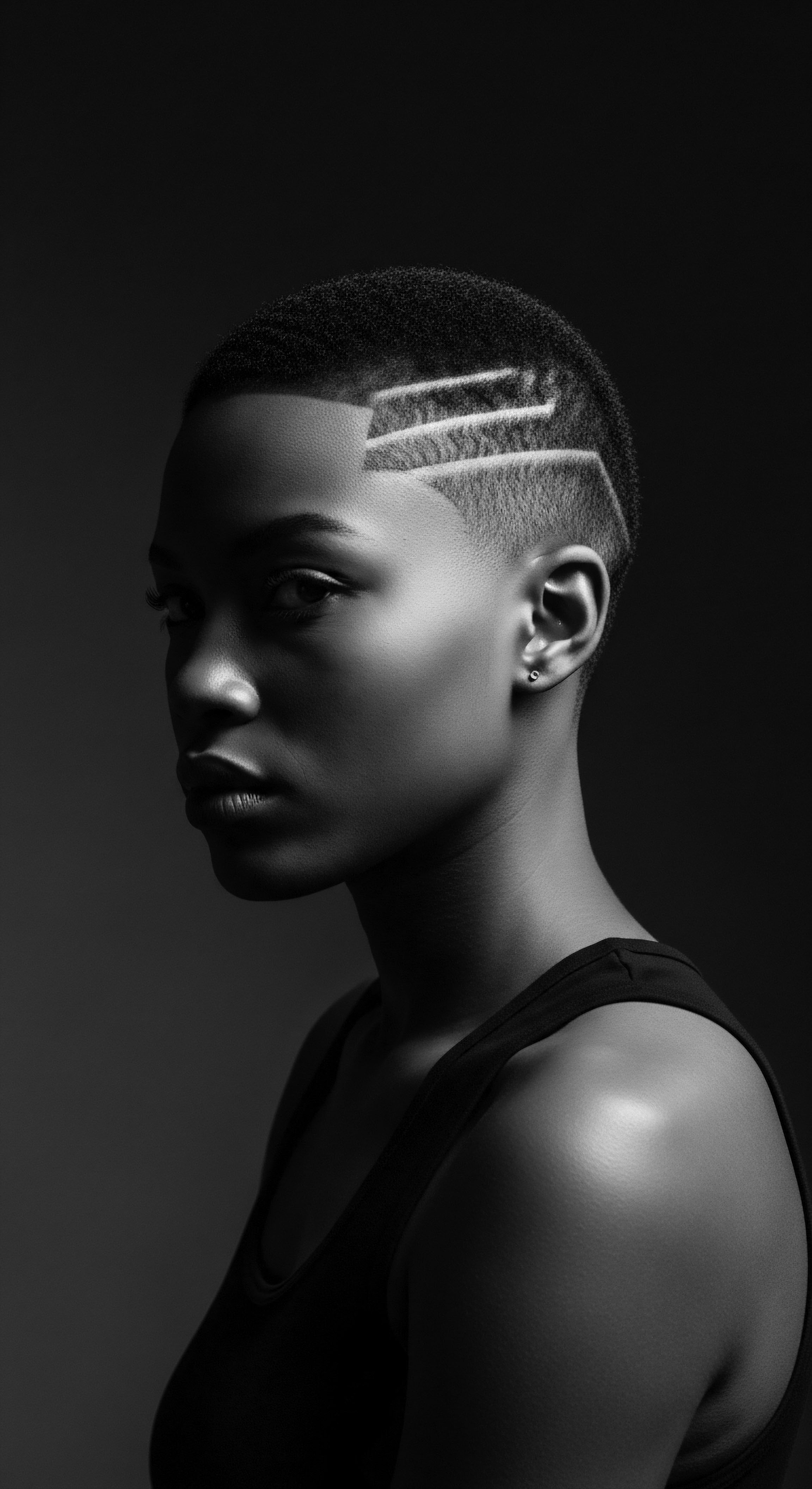
Roots
The contemporary bonnet, a nightly ally for so many of us with textured coils and curls, carries within its soft folds an ancestral memory, an echo from distant shores and bygone eras. This simple, often silken, covering traces its origins back through centuries, drawing inspiration from head wraps worn for both practical need and profound cultural significance across Africa and its diaspora. To truly grasp its grounding, we first consider the hair itself, its intricate structure and inherent qualities that have, through ages, necessitated careful guardianship.
African civilizations understood hair not as a mere adornment, but as a vibrant extension of self, community, and spiritual connection. Hairstyles conveyed identity ❉ a person’s family, their tribal affiliation, their social standing, even their marital status (JD Institute of Fashion Technology, 2021). Hair care rituals were communal, social events, often spanning hours or even days, speaking to their deep cultural importance (Colleen, 2020). These customs reveal a reverence for hair that went beyond surface appearance, making its preservation a shared priority.

What does Textured Hair Anatomy Reveal about Ancient Protective Practices?
The unique anatomical structure of textured hair – its helical coil, the uneven distribution of cuticle layers, and its inherent tendency toward dryness – predisposed ancestral communities to methods of care that prioritized protection. Unlike straight strands, highly coily hair, also known as kinky or coily hair , naturally possesses fewer cuticle layers to lie flat, leaving its inner cortex more exposed to environmental elements and mechanical friction (Colleen, 2020). This structural distinction means textured hair is more prone to moisture loss and breakage.
In ancient African societies, a clear understanding of these hair characteristics led to the use of coverings that mitigated environmental damage. Head wraps, known by various names such as Gele in Nigeria, Duku in Ghana, and Doek in South Africa, served as vital shields against the relentless sun, abrasive dust, and drying winds of diverse climates (JD Institute of Fashion Technology, 2021; Leone Culture, 2023). This practical function ensured the hair remained moisturized and less prone to tangles, offering a foundational blueprint for modern protective headwear. The wraps were often made from locally available textiles, chosen for their protective qualities, which today we understand as preventing the friction that cotton can cause.
Beyond simple environmental defense, head coverings also served a purpose tied to spiritual beliefs. Given its elevated position on the body, hair was often considered a channel to the divine, a conduit for spiritual energy. Protecting the head with a covering honored this sacred connection (Colleen, 2020).
This spiritual dimension gave ancestral head wraps a meaning far grander than their material form, weaving protection with profound reverence for both self and the unseen world. The contemporary bonnet, in its quiet nightly duty, carries this legacy of protection and honor for the hair, now understood through the lens of modern science affirming ancient wisdom.
Ancient head wraps protected textured hair from harsh environments, maintaining moisture and preventing damage.

How Did Forced Head Coverings Shape Textured Hair Protection?
The transatlantic slave trade presented a brutal rupture in the cultural continuum of African hair practices. Captured Africans were often subjected to head shaving upon arrival in the Americas, a dehumanizing act designed to strip them of their cultural identity and sever ties to their ancestral lands (Odele Beauty, 2021; Kilburn & Strode, 2021). This act of violence underscored the profound connection between hair and identity, forcing enslaved individuals to innovate and adapt their hair care.
Despite the horrors of enslavement, the ingenuity of African people persisted. Head coverings, though sometimes imposed as symbols of subservience by slaveholders, became instruments of resistance and self-preservation (Helen Bradley Griebel, n.d.; Sonson, 2021). Laws such as Louisiana’s infamous Tignon Law of 1786 mandated that Black women, even those who were free, cover their hair with a kerchief or tignon to denote their supposed lower social standing (Odele Beauty, 2021; Wilderness, 2015). Yet, women resisted these oppressive measures by transforming the mandated coverings into statements of dignity and defiance.
They adorned their tignons with vibrant colors, luxurious fabrics, jewels, ribbons, and feathers, turning a badge of subjugation into a display of personal and communal pride (Hype Hair, 2023; Cee Cee’s Closet NYC, 2021). This adaptation speaks volumes about the indomitable spirit of those who continued to assert their identity against overwhelming odds.
The utilitarian aspect of head coverings during slavery also became critically important. With limited resources and demanding labor, head wraps shielded hair from dirt, lice, and sun exposure, while also preserving styles, allowing them to last longer between the scarce opportunities for care (PBS, n.d.; Sonson, 2021). Sundays, often the only day of rest, became a time for communal hair grooming, where threading with fabric or cotton helped achieve defined curls when undone, an ancestral precursor to modern protective styling (Library of Congress, n.d.).
This period reinforced the protective function of head coverings, not just for style, but for the fundamental health and cleanliness of textured hair under duress. The historical record indicates enslaved women used available scraps of fabric, handkerchiefs, or cotton rags for these coverings (Hype Hair, 2023).
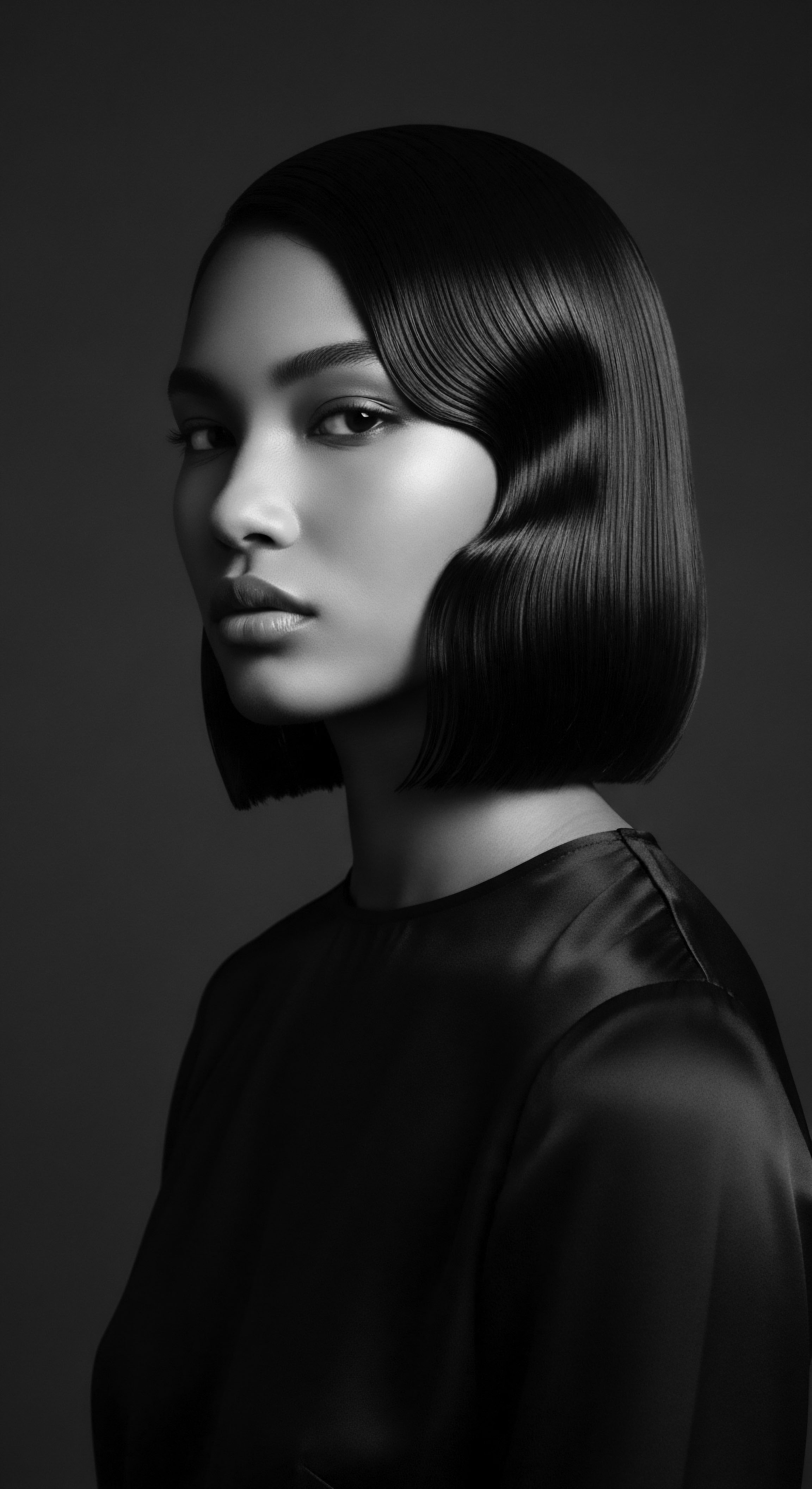
Ritual
The historical head covering, moving from forced requirement to cultural reclamation, laid the groundwork for contemporary hair protection rituals. The journey of these coverings, from the communal styling sessions in West Africa to the subtle acts of resistance during enslavement, gradually shaped the practices we observe today, particularly the bedtime bonnet tradition. It speaks to a continuous thread of care, adaptation, and cultural assertion.
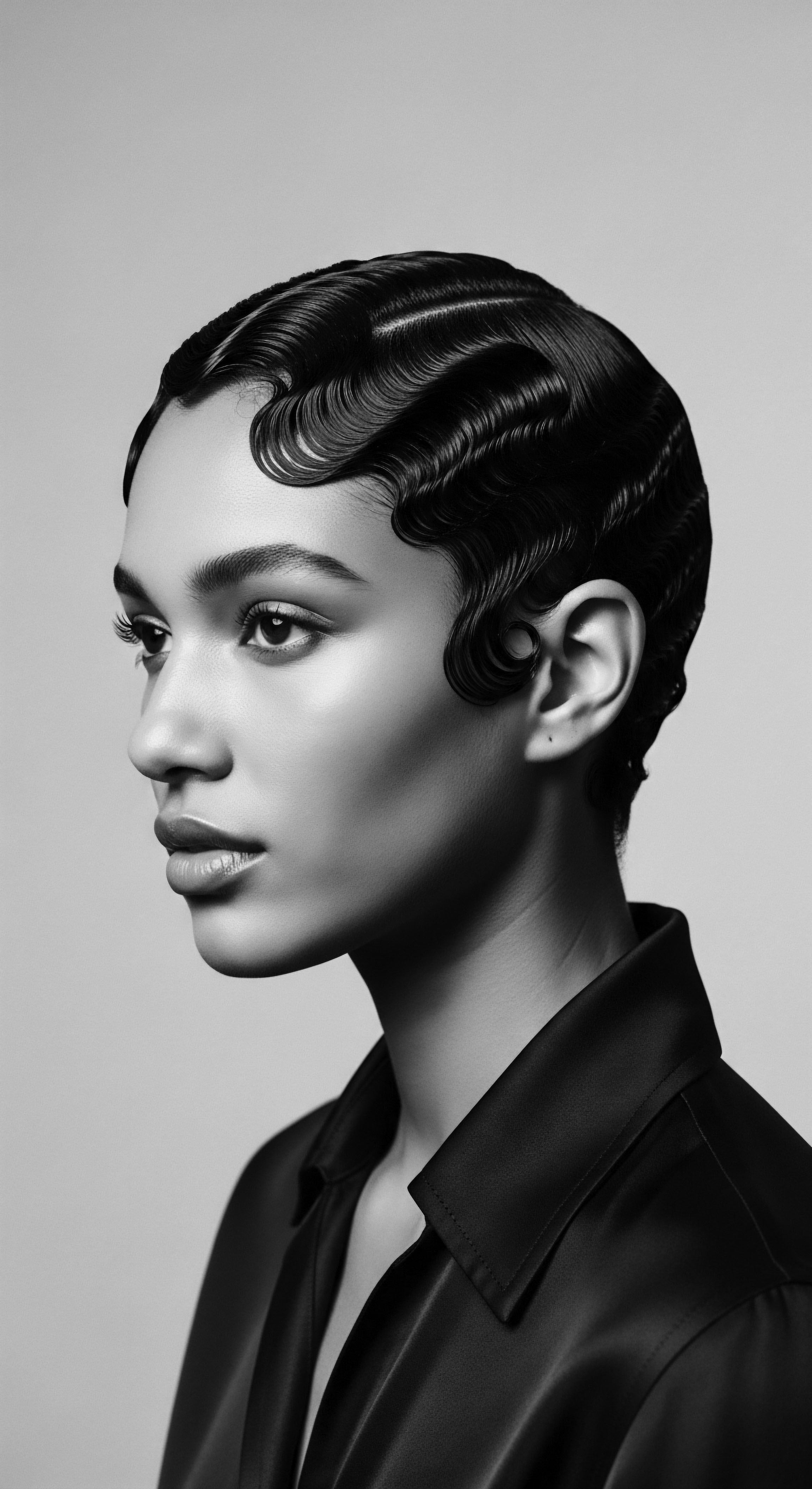
How do Traditional Styling Methods Relate to Bonnet Design?
Traditional styling practices, particularly those focused on preserving intricate braids, twists, and coils, demonstrate a clear lineage to the modern bonnet’s function. In many African societies, elaborate hairstyles took immense time and skill, often signifying social status or marital standing (JD Institute of Fashion Technology, 2021; Joico, n.d.). Such styles required safeguarding, especially during sleep or work, to extend their longevity and maintain their structural integrity.
Consider the widespread practice of threading or African hair wrapping , a technique centuries old, where hair is wrapped tightly with yarn, cotton, or even eel skin strips, to stretch, protect, and set curls without heat (Not Your Mommas History, 2015; Library of Congress, n.d.). This practice not only protected hair from external elements but also created a smooth, defined texture when unwrapped. The very act of wrapping hair with soft materials, whether for styling or preservation, directly mirrors the core principle of a bonnet ❉ minimizing friction and maintaining a set style. The early use of cotton rags and handkerchiefs as nighttime covers during enslavement served a similar purpose, aiming to retain moisture and prevent tangles after the arduous week of labor (Hype Hair, 2023).
The transition from these wrapped styles to dedicated head coverings for sleep marks a practical evolution. As society shifted and more readily available fabrics appeared, the function of a simple, soft cap for nighttime protection became obvious. The modern satin or silk bonnet is a direct descendant of these early textile-based protective strategies, offering a smooth surface that reduces friction against pillowcases, thereby preventing frizz, breakage, and moisture loss (Esme Luxury, 2024). This understanding underscores that bonnets are not a new invention but a refined iteration of age-old wisdom concerning textured hair care.
Bonnets echo traditional hair wrapping techniques by minimizing friction and preserving textured styles.
The connection to cultural protective styling extends to how communities maintained hair through daily life. Head wraps often served to hold styles in place during physical labor, protecting them from dust and tangles, much like a modern bonnet secures a fresh twist-out or braid-out overnight. The resilience shown in transforming oppressive head covering mandates into expressions of personal style, as seen with the Tignon laws, further solidifies the role of headwear in both practicality and identity for those with textured hair. This historical continuum confirms the bonnet’s purpose ❉ a tool for maintaining hair health while respecting its styling integrity.
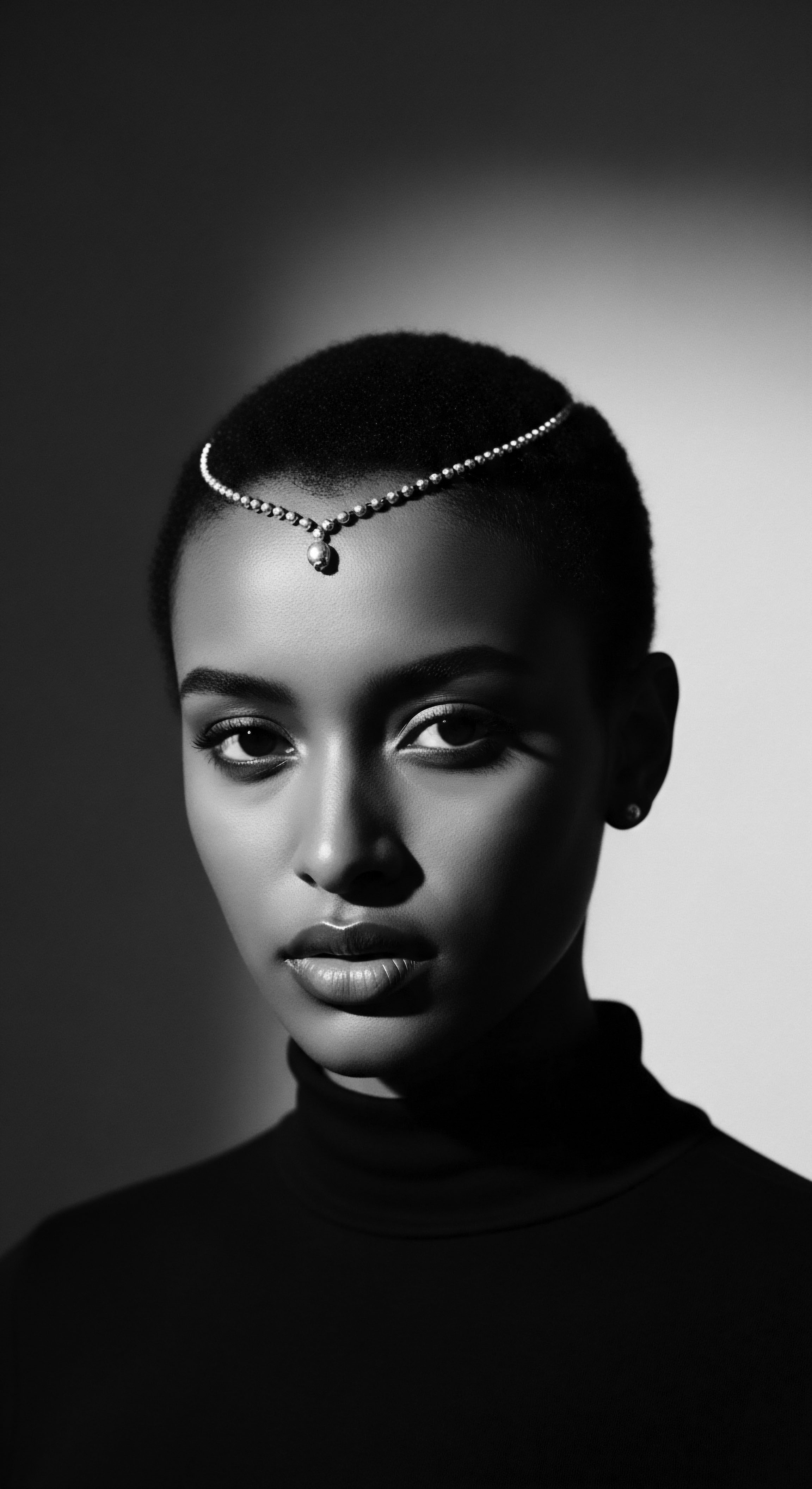
What Traditional Tools Paved the Way for Bonnet Development?
The tools and methods of ancestral hair care directly influenced the conceptualization of the protective bonnet. While not a “tool” in the conventional sense, the choice of materials for head coverings was paramount. Early African societies often used natural fibers and woven cloths, each with specific properties.
The very idea of wrapping hair in cloth points to an awareness of fabric’s effect on hair. For instance, the traditional use of various textiles for head wraps – cotton, sometimes silk, or even finely woven plant fibers – laid the groundwork for understanding material science in hair care (Esme Luxury, 2024; Wilderness, 2015).
The practice of oiling and buttering hair with natural substances, common across many African cultures, preceded the need for ways to keep those treatments from rubbing off or attracting debris. Head coverings would have naturally supported the efficacy of these nourishing rituals, sealing in moisture and emollients as hair rested or engaged in daily activities. The evolution of the bonnet also parallels the development of hair accessories designed to secure or protect intricate coiffures. Items like hairpins, rudimentary combs, and tying elements were used to hold styles, and a covering offered an additional layer of preservation.
- Fabric Choice ❉ Traditional head wraps utilized materials like cotton and various woven textiles, setting a precedent for considering fabric properties in hair care, leading to modern silk and satin bonnets.
- Oils and Butters ❉ Ancestral application of natural emollients like shea butter and palm oil necessitated coverings to protect treated hair and seal in moisture.
- Securing Elements ❉ Early hairpins and tying techniques to hold intricate styles led to the need for outer layers of protection, like wraps or simple caps, to extend style life.
The transition from simply tying a cloth around the head to designing a fitted cap reflects a move toward optimized protection, specifically for sleep. The goal remained consistent ❉ to prevent hair from drying out, breaking, or becoming matted due to friction with rough surfaces. This continuous thread of innovation, from simple wraps to refined bonnets, represents an ongoing dialogue between the innate needs of textured hair and the human ingenuity to meet those needs, deeply rooted in centuries of communal and personal care practices.

Relay
The journey of historical head coverings into the contemporary bonnet extends beyond mere utility; it encompasses a complex relay of cultural meaning, scientific validation, and social commentary. This progression speaks to how ancient practices, adapted through adversity and re-embraced with pride, continue to shape identity and inform our understanding of textured hair wellness. We look deeper into the interplay of tradition, science, and the profound social dimensions that bonnets carry today.

How Did Head Coverings Become Symbols of Resistance and Self-Definition?
The transformation of head coverings from symbols of oppression into powerful statements of resistance and self-definition represents a significant chapter in the heritage of textured hair. During the era of enslavement in the Americas, head wraps were often mandated by colonizers, intended to mark Black women as subservient and to strip away their previous visual markers of status or beauty (Helen Bradley Griebel, n.d.; JD Institute of Fashion Technology, 2021). Yet, against this backdrop of dehumanization, enslaved and free Black women strategically subverted these symbols.
In a powerful act of defiance, as seen with the Tignon Laws in 18th-century Louisiana, where free women of color were compelled to wear head coverings, these women transformed the mandate into an opportunity for artistic expression (Odele Beauty, 2021). Instead of conforming to an imposed sense of inferiority, they adorned their prescribed wraps with vibrant fabrics, precious jewels, and elaborate styling, making them into symbols of elegance, defiance, and self-worth (Cee Cee’s Closet NYC, 2021). This act of reclaiming the head covering as a medium for self-expression demonstrated an unwavering spirit of cultural preservation and personal agency amidst systemic attempts at erasure. This specific historical example vividly illuminates the connection between head coverings, textured hair heritage, and Black experiences, showing how a tool of oppression was re-authored into a symbol of resilience (Helen Bradley Griebel, n.d.).
The legacy of this resistance continued through the 20th century. During the Black Power Movement of the 1960s and 1970s, headwraps, alongside the Afro , resurged as powerful assertions of Black identity and pride (Sonson, 2021; Odele Beauty, 2021). They became an outward declaration against Eurocentric beauty standards, signaling an embrace of natural hair and African roots. This historical arc demonstrates a continuous thread of head coverings signifying identity, resilience, and a deep connection to ancestral heritage, making the modern bonnet a quiet continuation of this powerful legacy.
Head coverings, once imposed, became powerful emblems of cultural identity and defiance through creative reclamation.
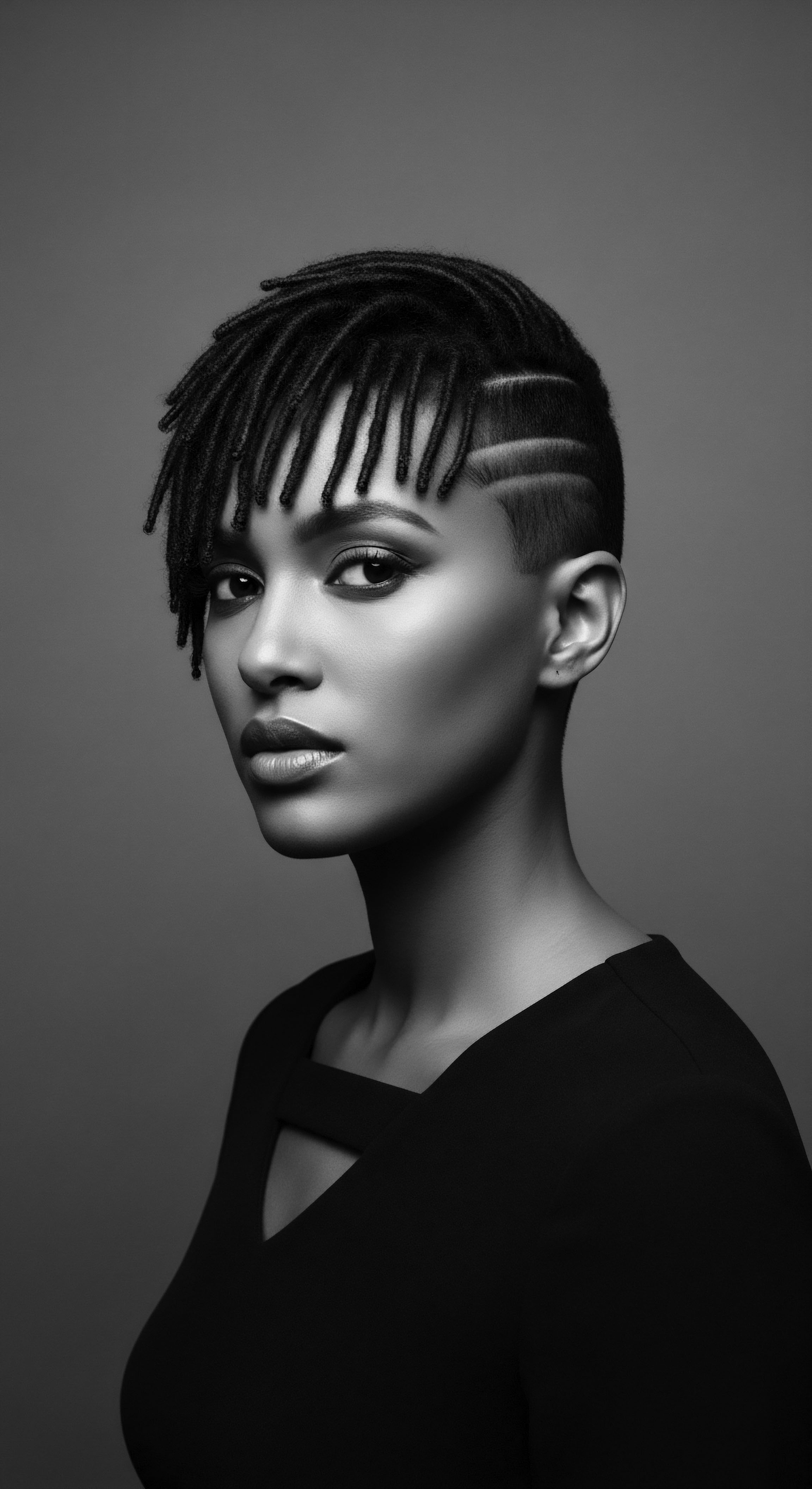
What Science Validates Ancient Protective Hair Care with Bonnets?
The wisdom embedded in ancestral hair care practices, particularly the use of head coverings, finds strong validation in modern trichology and hair science. While ancient communities may not have articulated the science in clinical terms, their observations of textured hair’s response to environmental factors and friction led to highly effective protective methods. The very structure of coily hair, with its elliptical shape and fewer cuticle layers, renders it more susceptible to external aggressors. This morphological reality explains why friction from rough surfaces, like cotton pillowcases, can cause dryness, breakage, and tangling.
The protective action of a modern bonnet, typically crafted from silk or satin, directly addresses these vulnerabilities. These smooth fabrics create a minimal friction barrier between hair and coarser materials (Esme Luxury, 2024). Scientific understanding confirms that reduced friction means:
- Less Mechanical Damage ❉ Hair strands are not snagged or pulled, minimizing breakage and split ends, which are common concerns for textured hair.
- Moisture Retention ❉ Unlike absorbent materials such as cotton, silk and satin do not wick away the natural oils and moisture from the hair. This allows the hair’s natural sebum and applied products to remain on the strand, maintaining hydration and softness (Esme Luxury, 2024).
- Style Preservation ❉ By enclosing the hair, a bonnet keeps styled coils, braids, or twists intact, preventing them from unraveling, flattening, or experiencing frizz due to movement during sleep. This extends the life of styles, reducing the need for frequent manipulation, which can also cause damage.
The ancestral choice of specific cloths for wraps, though perhaps not always silk, provided a rudimentary understanding of these benefits. The communal practice of tying hair up for protection during work or rest, as seen in various African cultures, inherently worked to shield hair from environmental aggressors and maintain its integrity over time. Modern science simply quantifies and explains the mechanisms behind these time-honored practices, revealing the ingenuity of those who, through observation and inherited wisdom, laid the groundwork for contemporary hair protection strategies. This continuity from ancestral wisdom to scientific explanation underscores the bonnet’s deep roots in the practical and enduring science of textured hair care.
| Historical Material/Practice Woven plant fibers, rough cotton rags, handkerchiefs |
| Modern Bonnet Equivalent/Benefit Soft, smooth silk or satin fabrics |
| Historical Material/Practice Protection from sun, dust, environmental abrasions |
| Modern Bonnet Equivalent/Benefit Reduces friction, prevents frizz and breakage |
| Historical Material/Practice Containing oiled or threaded hair to set styles |
| Modern Bonnet Equivalent/Benefit Retains hair's natural moisture and applied products |
| Historical Material/Practice Communal nighttime wraps for style longevity |
| Modern Bonnet Equivalent/Benefit Preserves hairstyles, extends time between washes/restyles |
| Historical Material/Practice The journey from simple wraps to modern bonnets demonstrates a continuous emphasis on protecting textured hair's unique properties. |

Reflection
To contemplate the modern bonnet is to hold a fragment of living history in one’s hands. It is a symbol woven from the threads of ancestral wisdom, colonial oppression, and triumphant self-reclamation. For those with textured hair, this humble head covering is far more than a tool for preserving a hairstyle or retaining moisture; it is a resonant connection to generations past, a quiet declaration of identity, and a profound act of self-care rooted in the soul of a strand.
The journey from the intricate headwraps of ancient Africa, signifying status and spirituality, through the mandated coverings of enslavement, defiantly transformed into badges of resistance, to the silk-lined bonnets of today, speaks to an enduring legacy. It stands as a testament to the resilience of Black and mixed-race communities, their ability to transform adversity into beauty, and their unwavering commitment to honoring their heritage. The bonnet, in its unassuming presence, safeguards not only hair but also the very spirit of a people who have consistently found ways to protect, celebrate, and define themselves, one cherished strand at a time. It truly serves as a living archive of hair, identity, and profound care.
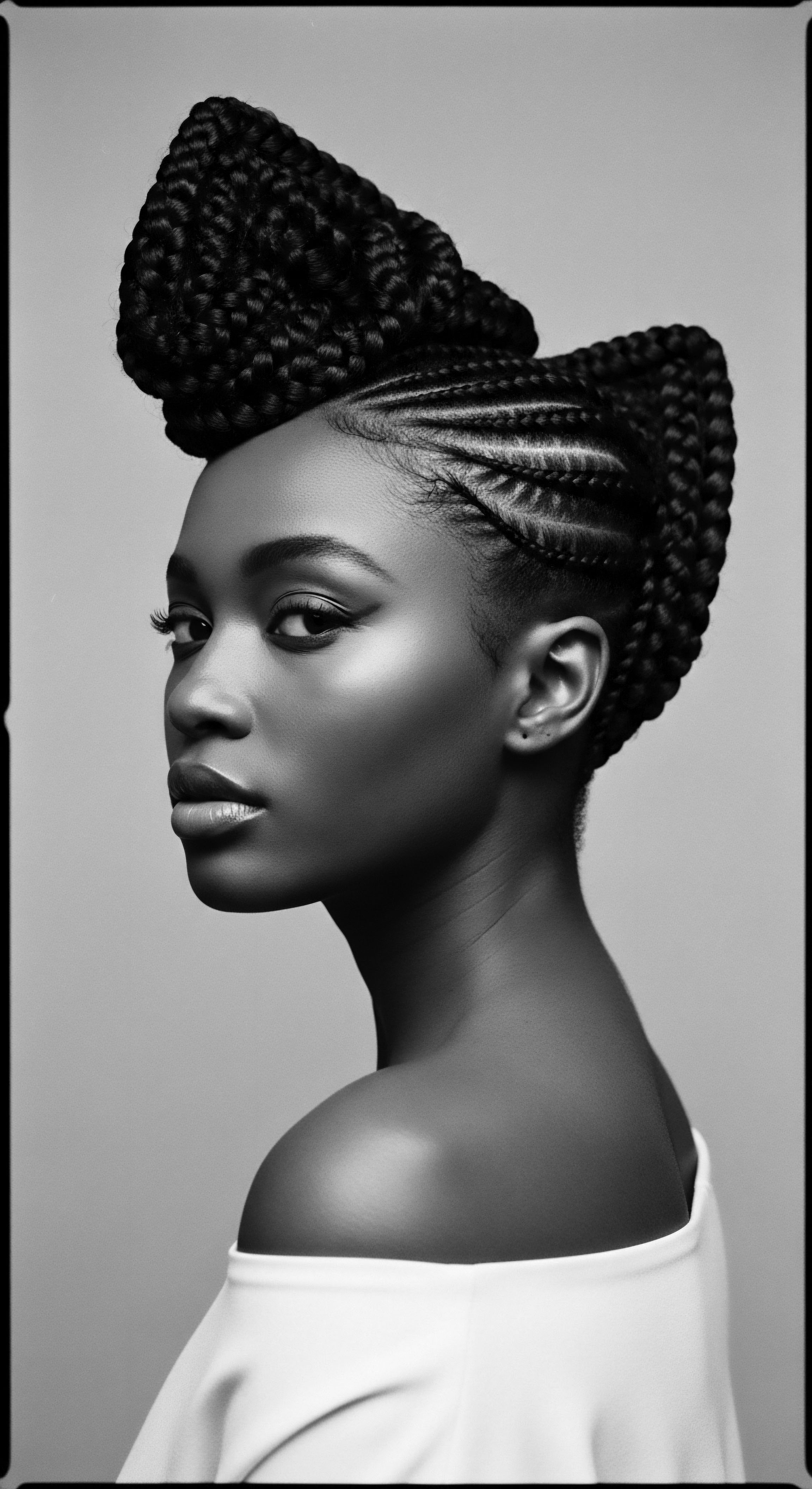
References
- Cee Cee’s Closet NYC. (2021, March 10). The History of Bonnets. Retrieved from Cee Cee’s Closet NYC website.
- Colleen. (2020, August 28). The History of Textured Hair. Retrieved from Colleen website.
- Esme Luxury. (2024, August 6). Silk Hair Wraps in Different Cultures ❉ A Global Perspective. Retrieved from Esme Luxury website.
- Griebel, H. B. (n.d.). The African American Woman’s Headwrap ❉ Unwinding the Symbols. Art, Design, and Visual Thinking.
- Hype Hair. (2023, June 26). Unveiling the History of the Hair Bonnet for Black Women. Retrieved from Hype Hair website.
- JD Institute of Fashion Technology. (2021, June 23). Headwraps ❉ History and Evolution. Retrieved from JD Institute of Fashion Technology website.
- Joico. (n.d.). Roots, Rise & Influence ❉ A Retrospective of Textured Hair. Retrieved from Joico website.
- Kilburn & Strode. (2021, October 29). Afro-texture ❉ a hair-story. Retrieved from Kilburn & Strode website.
- Leone Culture. (2023, June 20). Exploring the Significance Of Headwraps In African Fashion And Traditions. Retrieved from Leone Culture website.
- Library of Congress. (n.d.). Heavy is the Head ❉ Evolution of African Hair in America from the 17th c. to the 20th c. Retrieved from Library of Congress website.
- Not Your Mommas History. (2015, June 4). African American Antebellum Enslaved & Free Hair Care and Wrapping/Threading Tutorial pt.1. YouTube.
- Odele Beauty. (2021, February 22). 6 Things Everyone Should Know About Black Hair History. Retrieved from Odele Beauty website.
- PBS. (n.d.). Slave Women and the Head-Wrap. Slavery and the Making of America. Retrieved from PBS website.
- Sonson. (2021, April 24). The History and Meaning of Headwraps and Black Culture. Retrieved from Sonson website.
- Wilderness. (2015, January 25). The history & meaning of head wraps across Africa. Retrieved from Wilderness website.
